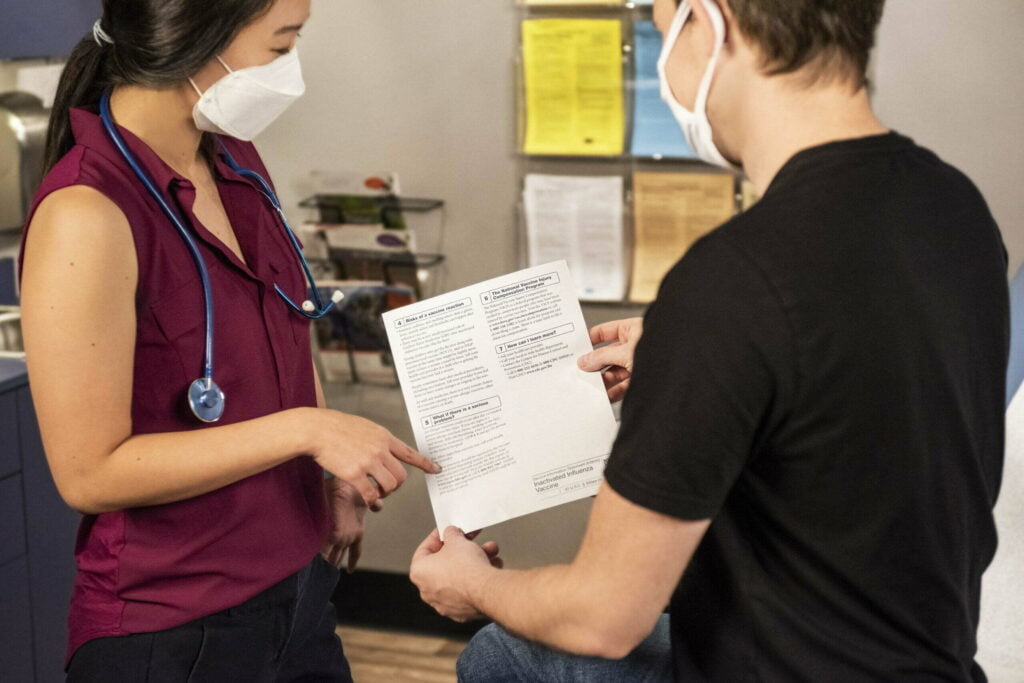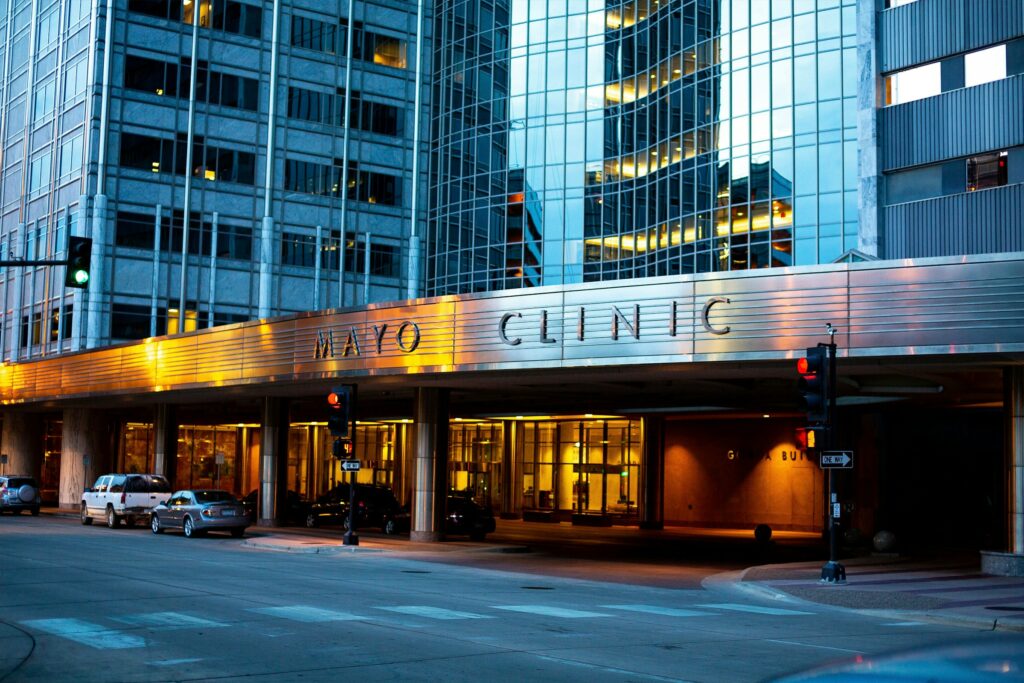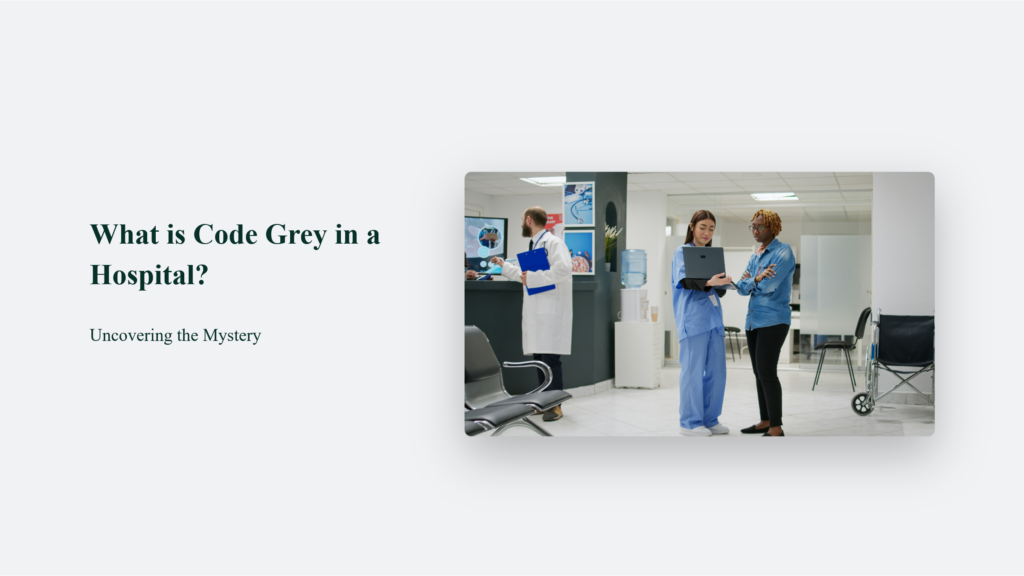

What is Code Grey in a Hospital? Uncovering the Mystery

As Seen On
Hospitals are often seen as beacons of safety, where the sick and injured receive care and protection. However, the calm and controlled atmosphere we associate with these institutions can sometimes be disrupted by various emergencies, one of which is indicated by the term “Code Grey.” This article delves into the significance of what is Code Grey in a Hospital, its implications for hospital safety, and how staff and patients typically respond to such a situation.

What is Code Grey in a Hospital?
In the bustling world of hospital operations, different colour-coded alerts play crucial roles in crisis management, each tailored to a specific type of emergency. “Code Grey” is one such alert, and while it may not be as universally recognised as “Code Blue” (cardiac arrest) or “Code Red” (fire), it is no less critical.
A Code Grey is generally declared when a combative or aggressive person is causing a disturbance in the hospital. It could be a patient, visitor, or even a staff member exhibiting threatening behaviour, potentially endangering themselves or others around them. During a Code Grey, the primary goal is to de-escalate the situation safely and efficiently, ensuring the safety of all parties involved.
The Impact of Code Grey on Hospital Operations: A Closer Look at Response and Coordination
Hospitals are intricate environments where every protocol serves a specific purpose, primarily aimed at safeguarding the well-being of patients and staff. Among these, Code Grey plays a pivotal role, particularly in managing incidents involving aggressive or combative individuals. This section delves deeper into the operational impact of a Code Grey, examining the mobilisation of the response team, the collaborative efforts required, and the broader implications for hospital safety and efficiency.
Mobilisation of the Response Team
When a Code Grey is announced, a specialised team’s immediate and coordinated response is triggered. This team typically includes:
- Security Personnel: The first responders are often trained specifically in nonviolent crisis intervention. They possess skills in conflict resolution and physical restraint techniques, which are crucial in controlling situations without escalating violence.
- Nursing Staff: Nurses play a critical role in providing insights into the patient’s medical history and current treatments, which may inform the approach to de-escalation.
- Psychiatric Specialists (if available): These experts can assess and address underlying psychiatric conditions that may drive aggressive behaviour.
- Administrative Staff: They are involved to ensure that the incident is documented correctly and that all procedural protocols are followed during and after the event.
This multidisciplinary approach is essential for resolving the incident immediately and minimising disruption to other hospital operations.
Collaboration with Medical Staff
The response team works closely with medical staff to understand and manage the root causes of aggressive behaviour. This collaboration often involves:
- Assessing the patient’s medical and psychiatric background: Understanding if the behaviour could be a side effect of medications or related to a psychiatric condition.
- Immediate medical review: Check to see if the patient is experiencing pain, discomfort, or any other medical issues that could be causing distress and aggressive behaviour.
- Ongoing monitoring: Post-incident monitoring ensures that the patient receives appropriate care and that aggression does not recur.
Training and Preparedness
Training for Code Grey situations is a critical component of hospital operations. Regular training sessions ensure all personnel are updated on the latest techniques and protocols. These training programs often include:
- Simulation drills: These help staff practice their response in a controlled environment, making them better prepared for real-world scenarios.
- Review of past incidents: Learning from previous Code Greys helps refine strategies and improve response times and effectiveness.
Impact on Hospital Safety and Patient Care
The implementation of Code Grey protocols has several impacts on overall hospital operations:
- Enhanced safety: Ensuring that all patients, visitors, and staff are safe from physical harm during incidents.
- Operational continuity: Hospitals can maintain operational continuity by efficiently managing these incidents and minimising disruption to other patients’ care.
- Legal and ethical compliance: Proper handling of Code Grey situations helps hospitals comply with legal and ethical patient care and safety standards.
Challenges and Considerations
While effective, the response to Code Grey has its challenges. These include:
- Resource allocation: Ensuring enough trained personnel are available at all times can strain hospital resources, especially in smaller or underfunded facilities.
- Emotional toll on staff and patients: Such incidents can have a lasting emotional impact, necessitating support systems for those affected.
- Balancing security with care: It can be challenging to find the right balance between responding with necessary force and maintaining compassionate care.
Real-Life Examples of Code Grey:
Arizona State Hospital Incident:
In one incident at the Arizona State Hospital, a Code Grey was called due to a patient displaying combative behaviour after witnessing threatening actions by another patient. The staff’s response was notably effective, leveraging detailed planning and teamwork.
They focused on verbal de-escalation and made the environment safe by removing potential hazards, which helped calm the patient. This incident highlighted the importance of nonviolent crisis intervention training and a well-coordinated team approach, allowing the situation to be resolved without physical intervention.
Coney Island Hospital’s Psychiatric Unit:
At Coney Island Hospital, a Code Grey crisis prevention team was established for their psychiatric inpatient unit. This team focuses on early intervention and response to calm agitated patients through the safest and least restrictive means possible.
Their approach includes a standardised communication system to inform team members quickly, emphasising nonphysical resolutions and including regular debriefings and data sharing to improve future responses. This structured approach helps manage immediate crises and enhance patient safety and staff preparedness.
Final Thoughts
“Code Grey” might not be a term many are familiar with, but for those working in hospitals, it is vital to ensure that these institutions remain sanctuaries of healing and safety. By understanding what triggers these incidents and how they are managed, hospitals can continue to provide care effectively even in the face of challenges.
In a hospital’s high-stakes environment, knowing how to handle a Code Grey is as crucial as any medical procedure. It underscores the importance of safety, preparedness, and compassion in crisis for staff and patients alike.
Frequently Asked Questions:
How does a Code Grey differ from other hospital emergency codes?
Unlike Code Blue, which is for medical emergencies involving patient cardiac arrest, or Code Red, which pertains to fire, Code Grey specifically handles incidents involving aggression or threats within the hospital.
Are visitors informed when a Code Grey is happening?
Generally, hospitals try to keep emergency codes discreet to avoid panic among patients and visitors. However, in a Code Grey situation, areas affected might be temporarily restricted to ensure safety.
What can patients do during a Code Grey?
Patients are advised to stay calm, follow any instructions given by hospital staff, and avoid areas where the incident is being handled.
Konger
Up until working with Casey, we had only had poor to mediocre experiences outsourcing work to agencies. Casey & the team at CJ&CO are the exception to the rule.
Communication was beyond great, his understanding of our vision was phenomenal, and instead of needing babysitting like the other agencies we worked with, he was not only completely dependable but also gave us sound suggestions on how to get better results, at the risk of us not needing him for the initial job we requested (absolute gem).
This has truly been the first time we worked with someone outside of our business that quickly grasped our vision, and that I could completely forget about and would still deliver above expectations.
I honestly can't wait to work in many more projects together!
Disclaimer
*The information this blog provides is for general informational purposes only and is not intended as financial or professional advice. The information may not reflect current developments and may be changed or updated without notice. Any opinions expressed on this blog are the author’s own and do not necessarily reflect the views of the author’s employer or any other organization. You should not act or rely on any information contained in this blog without first seeking the advice of a professional. No representation or warranty, express or implied, is made as to the accuracy or completeness of the information contained in this blog. The author and affiliated parties assume no liability for any errors or omissions.

